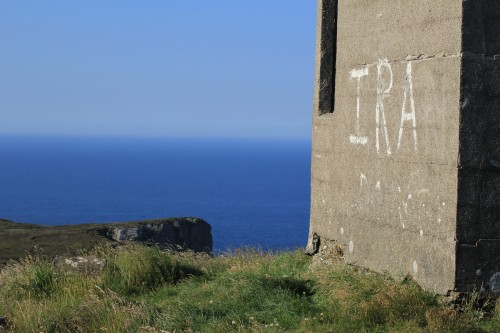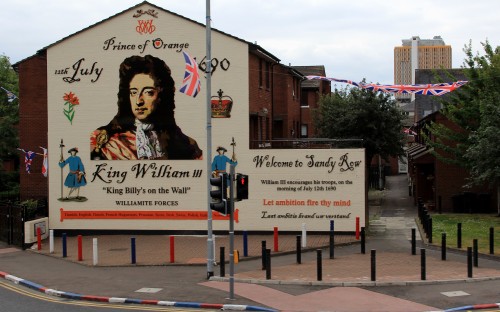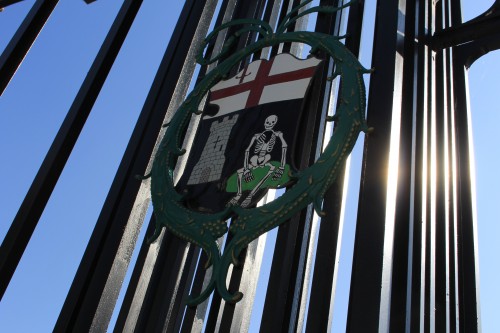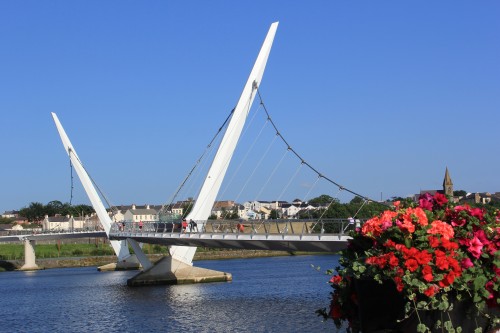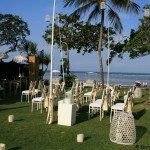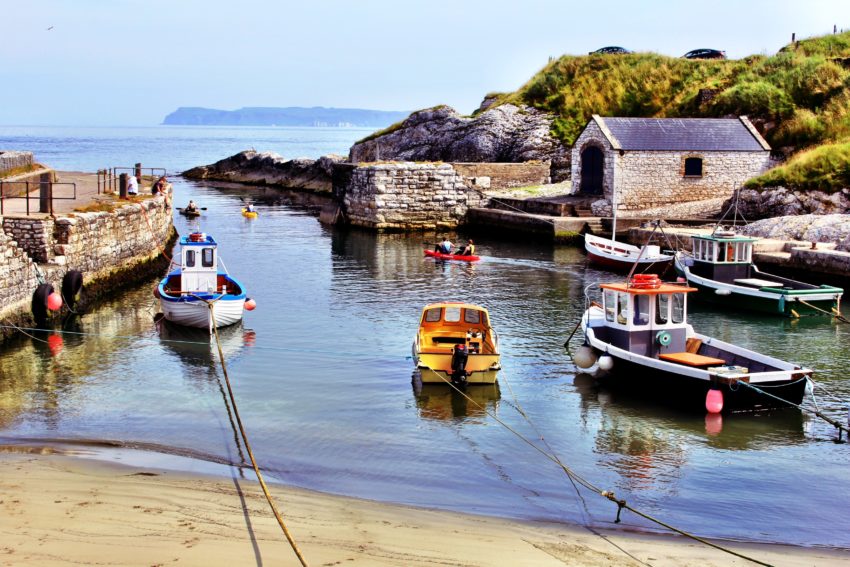Last updated on June 18th, 2024 at 02:16 pm
Is visiting Ireland one of your world travel dreams? If so, I have traveled several times to Ireland, especially Northern Ireland. With green fields dropping down to the sea, dramatic sea cliffs, gorgeous beaches, and friendly pubs, Ireland has everything a dream trip should encompass.
I traveled there during a more-than-typical (in the past few years anyway) confrontational July 12th Orange marching ‘celebration’. My trip was completely unaffected by the troubles. However, I could not help but notice the powerful use of banners, signs, flags, and symbols by ‘nationalists’ and ‘unionists’ to promote their cause.
So, my photo essay is a little different today. I will bring you lovely photos of idyllic Irish scenery in the coming weeks (and some Game of Thrones movie locations), but for this post, I want to share some of the signs and symbols of Northern Ireland. Signs are, after all, very important to the traveler—providing navigational aid as well as an insight into a place’s culture.
There are flags everywhere for the annual marching to mark the conquest of Ireland by the English King William of Orange in the 17th Century. Red, white, and blue flags for the unionists and (rarer) Irish tricolors for the nationalists. It’s not just the flags but also the street lights, curbsides, and roads that get painted.
Then, there are signs and murals. The ‘No Surrender’ in this sign over the entrance to a village refers to the Siege of Derry, where a group of apprentice boys barred the gates against the invading English army. When the King demanded that they “Surrender or die,” they issued the famous retort, “No surrender!”
The walled city of Derry – or Londonderry if you are so inclined – was one of the original Plantation cities, where the native Irish were expelled and a garrison established to protect the Anglo-Scots settlers. Here is a shot of the city’s coat of arms on the gates of the ancient cathedral. The castle, the skeleton, the gold harp, and the arms of the City of London (red cross and sword on white). The motto is “Life, Truth, Victory”.
Many political murals in Belfast’s Shankhill and Falls areas commemorate events from the troubles. Here is the international wall, which highlights political causes worldwide.
But there are also some symbols of hope. In 2013, Derry was one of the European Cities of Culture, and one of the major investments in preparation for the year-long celebration of the arts was the construction of the Peace Bridge.
This magnificent span across the River Foyle connects the largely unionist ‘Waterside’ with the largely nationalist ‘Cityside’ and, by improving access, is part of wider regeneration plans, particularly for the previously desolate Waterside.
Derry is a wonderfully attractive city to tour, packed with fascinating architecture and history. I hope this symbol of hope heralds good things for Northern Ireland in the future. It is certainly a great place to travel.
With its poignant history, stunning landscapes, and warm, welcoming population, Ireland is certainly a great place to travel. As the region continues to heal and grow, visiting Northern Ireland as part of your world travel dreams will offer you a unique opportunity to witness a land rich in stories and spirit and enjoy one of the most fascinating countries in the world.
Natasha von Geldern is a travel writer, editor, and blogger who is passionate about making the pages of the atlas real by traveling the world. She is a contributor to Travel Wire Asia, Wild Junket Magazine, Yahoo! Total Travel, and Travelbite. You can find her on her travel website and blog, WorldWanderingKiwi.
Note: Articles by Natasha may contain affiliate links and may be compensated if you make a purchase after clicking on an affiliate link.
